The Passionate week in Bigorski
(
30.04.2005
)
“The people worshiping, along with the disciples rejoicing, with branches cried out to Him: ‘Hosanna to the Son of David – Most praised Lord, God of our fathers, blessed are You.”
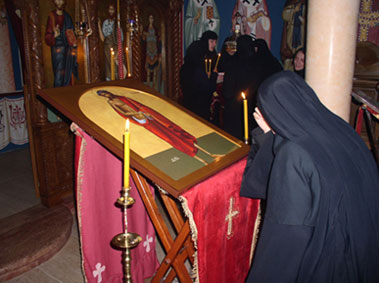
When the joy of the Palm Sunday quickly turned into grief over the Passionate events of the immense condescension of our Saviour Jesus Christ for mankind, the fathers in the monastery of Saint John the Baptist continued with the lamentation worship services that fill the Passionate week, in awe together with all the faithful of the Church throughout the centuries and plunged into the silent depths of the monastery, which unceasingly praise the Passion of our Lord. At this the sisters of the monastery of Saint George in Rajčica constаntly joined them.
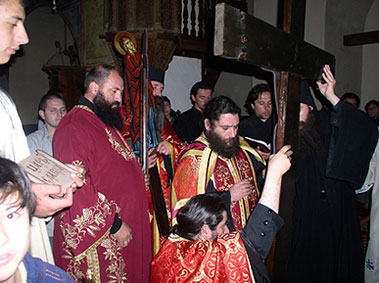
♫ Beholding You hung on the tree, O Christ...
Already on the eve of the Holy and Great Monday, in Bigorski they brought out the icon of Christ the Bridegroom that portrays the Lord with a thorny wreath, with tied hands holding a reed, and sang to Him, grieving: “I see Your bridal chamber adorned, my Saviour, and have no clothes to enter within. Lighten up the garments of my soul, O Light-giver, and save me…”
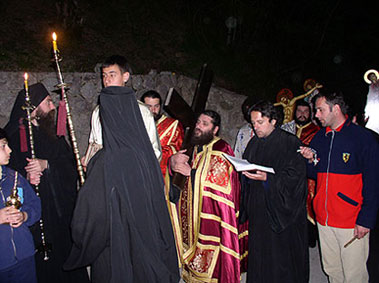
As wise God-seekers, after this through Gospel parables they brought to mind the dried up fig tree, the wise and the foolish virgins, and the multiplication of the talents—the spiritual gifts: that we should constantly adorn our souls with virtues, compassion, unceasing watchfulness and prayer. For: ‘Behold the Bridegroom coming at
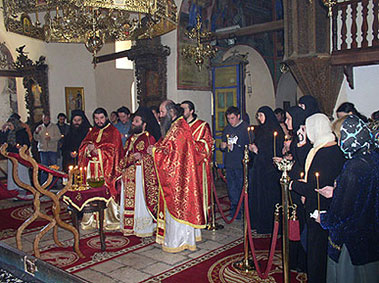
“My whole life, O soul, is like a tree, a field, a home, therefore make ready your heart for God, and leave nothing to bodily corruption.”
“The myrrh within me is corruptible, yet what You Are—gives us life, for such is Your name, Christ, the Divine anointment on the worthy poured out. Relieve and forgive me!”
Initiating Your disciples in the mysteries, Lord, You taught them, saying: ‘My friends, may no fear separate you from Me. For if I suffer, it is for the world. Do not be scandalised by Me, for I did not come to be served, but to serve, and to lay my soul for salvation of the world. If you are My friends, take my model.”
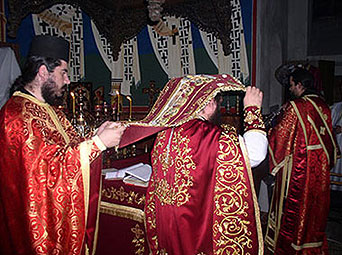
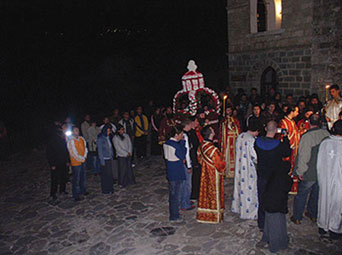
The procession on the Great Thursday brought Christ’s cross out of the monastery and upon returning, placed it before the Royal doors to receive the metanoias (prostrations) of the faithful—them overshadowed by the still grace of the twelve Gospel readings of Christ’s Passion and willing to be buried together with His ineffable burial.
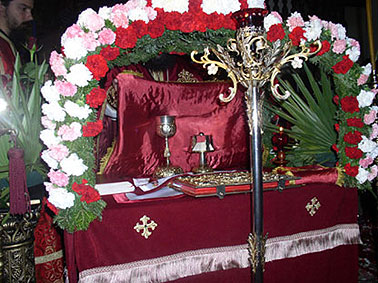
For the worship services on the day of the Lord’s death, the hegoumen of the Bigorski monastery, the archimandrite Parthenius, always arranges a flowery epitaphios made of over two thousand carnations. Over it, as over Christ’s tomb, the same evening on the Great Friday all the faithful together with the Mother of God, the holy myrrh-bearers and Christ’s apostles, through wondrous sad verses composed in three parts, lament over the death of their Creator and Saviour:
“Today, on the cross beholding You crucified, O Logos, the undefiled Virgin, lamenting with motherly tenderness, from the soul’s bottom did quiver, crying out in distress: ‘Woe to Me, my Divine child! Woe to me, to the world Light! Why are You leaving my eyes, God’s Lamb?’ Therefore the bodiless hosts themselves all in awe did say: unreachable Lord, glory to You!”
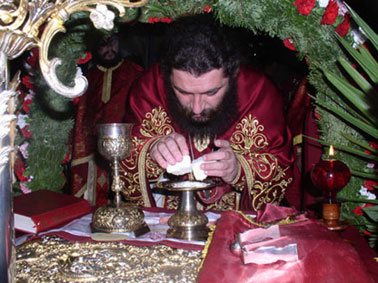
The Saturday service in the morning hours is a special event in the monastery. Then the fathers, by the model of the
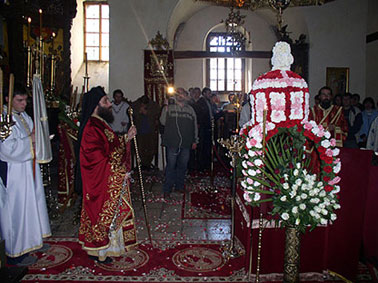
“You have redeemed us from the curse of the law, with Your precious blood, nailed on the cross and pierced with a spear, a spring of immortality You have become to people, Saviour, glory to You!”